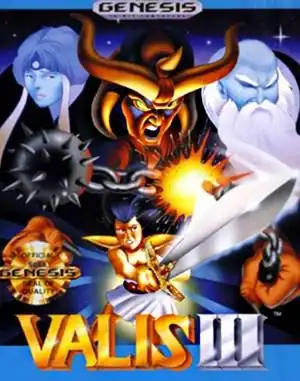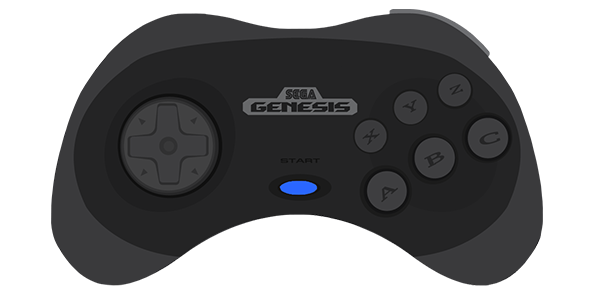Remember the days when platformers ruled, and anime aesthetics were just starting to capture our imaginations? If you were a TurboGrafx-CD or Sega Genesis owner back in the early '90s, chances are you might have crossed paths with the Valis series. While the first couple of entries had their quirks, it was arguably Valis III that truly found its stride, delivering a more polished and engaging adventure.
This wasn't just another side-scrolling action game; it brought together a blend of challenging gameplay, a dramatic anime-infused story, and for the first time, a trio of heroines ready to save the world. Let's dust off those memories and see why Valis III still holds a special place for retro enthusiasts.
What is Valis III? The Story So Far...
Following the events of Valis II, our brave schoolgirl-turned-heroine Yuko Ahso thought things might settle down. Not so fast! A new threat emerges from the Dark World in the form of King Glames (or Ramses, depending on the version), who seeks to merge his powerful sword with Yuko's legendary Sword of Valis to achieve ultimate dominion over all realms.
To face this new darkness, Yuko isn't alone this time. She's joined by two new allies: the fiery warrior Valna and the agile whip-wielder Cham. Their quest takes them across vibrant, often perilous landscapes, battling hordes of demons and confronting increasingly powerful bosses.
Stepping into the Shoes (and Armor)
At its core, Valis III is a side-scrolling action platformer. You'll jump, slash, and cast magic through various stages. Yuko, the main protagonist, starts with her reliable sword, which can be powered up to increase its range and strength. She can also collect different types of magic, like fire, ice, and lightning, unleashing screen-clearing attacks when her magic meter is full.
Controls feel tighter and more responsive than in previous Valis games, making the moment-to-moment gameplay much more satisfying. The basic mechanics are easy to grasp, but mastering the nuances is key to survival.
The Power of Three: Yuko, Valna, and Cham
One of Valis III's biggest innovations was the introduction of multiple playable characters. Outside of boss battles, you can switch between Yuko, Valna, and Cham on the fly. This adds a strategic layer, as each character has unique attributes:
- Yuko: The balanced heroine. Good range with her sword, versatile magic. A solid all-rounder for most situations.
- Valna: The powerhouse. Her attacks are typically shorter range but hit harder. She's particularly potent with magic, making her great for clearing rooms or damaging bosses quickly, though she might take more damage herself.
- Cham: The agile fighter. Wields a whip, giving her unique attack angles and potentially better crowd control in certain situations. Her stats might differ slightly, offering a different feel.
Switching characters allows you to tackle different level segments or enemy types more effectively. It adds replayability and encourages experimentation.
World Design & Platforming Peril
Valis III upped its game significantly in level design. Stages are more varied and visually interesting, featuring diverse environments from dark castles to icy landscapes and even futuristic-looking areas.
Platforming plays a much bigger role here. While generally well-designed, there are moments that demand precise jumps and movements. A slide maneuver becomes available later, which is essential for navigating certain obstacles but can also lead to frustrating deaths if not timed perfectly, especially when combined with the game's sometimes finicky super jump. It's a classic example of retro difficulty – sometimes challenging, sometimes just a little cheap!
Boss Fights: A Test of Patience
Like many games of its era, Valis III features memorable and challenging boss encounters. These often require learning patterns and exploiting openings. While some bosses are manageable, the later ones can be quite difficult, often having long health bars and demanding sustained focus.
Adding to the challenge, if you die during a boss fight, you lose all your collected power-ups, including weapon upgrades and magic. This can make recovering and trying again significantly harder, forcing you to replay parts of the level or grind for power-ups before re-engaging. It's a design choice that certainly tested the patience of players back in the day!
Genesis vs. Turbo CD: Which Version Reigns Supreme?
Valis III saw releases on both the TurboGrafx-CD (PC Engine CD) and the Sega Genesis (Mega Drive). While the core game is similar, there are notable differences:
- Cutscenes & Voice Acting: The Turbo CD version is famous for its lengthy, animated anime cutscenes and full voice acting. The Genesis version replaces these with static images and text scrolls, losing a significant part of the presentation.
- Content: The Turbo CD version generally has more content, including entire level sections missing from the Genesis port.
- Graphics & Sound: Both versions have their strengths. The Turbo CD often boasts more vibrant colors and CD-quality music and voice, while the Genesis might have better parallax scrolling in some areas. The overall visual presentation differs, with the Genesis having a darker, more muted palette.
- Exclusive Content: The Genesis version does include some exclusive content, like a unique level and redesigned boss fights, attempting to compensate for the missing CD content.
For the full, intended anime experience, the Turbo CD version is generally considered superior due to the inclusion of its iconic cutscenes and voice acting. However, the Genesis version is still a very competent action platformer, just with a different presentation.
The Look and Sound of Adventure
Valis III fully embraces its 80s and early 90s anime roots. Character designs, enemy sprites, and environments are dripping with that classic aesthetic. The Turbo CD version, in particular, leverages the format for enhanced visuals and audio.
The soundtrack is another highlight, featuring catchy and atmospheric tunes that fit the various stages. The Turbo CD's redbook audio provides a higher quality sound experience compared to the Genesis's FM synthesis, though the Genesis still delivers a memorable score in its own right. And while the English voice acting on the Turbo CD can be... charmingly inconsistent... it adds to the game's unique personality.
Why Valis III Still Matters
Valis III stands out as a high point in the Valis series. It refined the gameplay, introduced engaging new mechanics with the multiple characters, and delivered a more substantial and polished experience than its predecessors. It successfully blended solid action platforming with a strong anime presentation, a combination that wasn't as common at the time.
While challenging, especially the later bosses, it's a rewarding game for fans of the genre and the era. It's a great example of a game that found its footing and delivered on its potential.
How to Play Today
Getting your hands on original Turbo CD or Genesis cartridges can be pricey. Luckily, Valis III has seen a modern resurgence:
- Valis: The Fantasm Soldier Collection: This collection, available on platforms like the Nintendo Switch and PC (via Steam), includes the PC Engine CD version of Valis III. It often adds quality-of-life features like save states, rewind, and visual/audio galleries, making the original challenge more accessible.
- Emulation: Both the Turbo CD and Genesis versions are playable via emulators like Mednafen (for Turbo CD) or Kega Fusion/BizHawk (for Genesis). You'll need to source the game ROMs/CD images yourself.
FAQ
Q: Is Valis III a good starting point for the series? A: Yes, it's often considered one of the best entries and a good place to jump in, as it improves significantly on the first two games.
Q: Which version is better, Turbo CD or Genesis? A: The Turbo CD version is generally preferred for its full anime cutscenes and voice acting, as well as having more content. However, the Genesis version is still a solid action platformer.
Q: Is the game very difficult? A: It has moderate difficulty overall, but features challenging platforming sections and particularly tough boss fights, made harder by losing power-ups upon death. Modern collections with rewind/save states can make it more manageable.
Q: Are the other characters (Valna, Cham) just reskins of Yuko? A: No, they have distinct attack styles, stats, and unique magic abilities, making switching between them a key gameplay mechanic.
Final Thoughts
Playing Valis III today is a fun trip back to an era where Japanese action games and anime were merging in exciting ways. It's a game that polished the rough edges of its predecessors and delivered a memorable adventure with a unique character-switching mechanic. Whether you experienced it back then or are discovering it through a modern collection, Valis III remains a shining example of a classic 16-bit era action platformer with plenty of retro charm.


